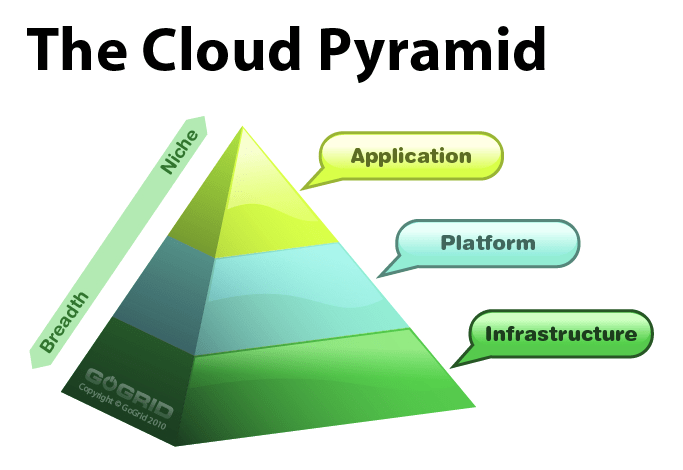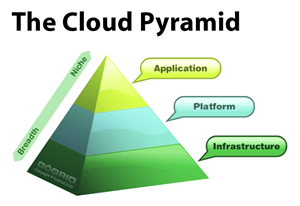A few weeks ago, I laid out my predictions for 2012, casting seeds into the wind to see where clouds and businesses may crop up. But there are still skeptics out there, people who believe that cloud computing is just a passing phase or that it really isn’t that much different than traditional infrastructure. Having lived and breathed cloud for over 4 years, I believe that I have seen it all and heard many of the arguments that say that the cloud isn’t really a game changer.
So, I thought that I would present a few Cloud Computing Myths or fallacies that I have come across, to help people better understand what they might be getting themselves into when they go down that cloudy path.
I think that it is important to first outline what experts around the world believe that cloud computing is and then we can look at some of the things that it isn’t. Cloud computing is the on-demand and scalable consumption of IT resources via the internet. It is billed by usage and utilizes standard internet technologies when it is deployed.
Several years ago, there was a lot of confusion as to the characteristics of cloud computing because there were various types of clouds available for consumption. In order to present the “layers” of cloud computing, I developed a graphic called the Cloud Pyramid that graphically represents the multiple layers of the cloud. Over the years, people have accepted this visual depiction of the cloud because it is less abstract than more scientific approaches. Let’s take a look at the layers of Cloud Computing.
There are three primary ones:
- Cloud Applications (known as SaaS)
- Cloud Platforms (known as PaaS)
- Cloud Infrastructure (known as IaaS)
Each of these layers presents different qualities, advantages and disadvantages. The most well know of these layers is called Cloud Applications, otherwise known as SaaS (Software as a Service). Essentially at this level, consumers of SaaS get access to a pre-defined set of functions. An easy to understand example is Gmail. With Gmail, you get exactly one thing, the ability to manage your email in a hosted environment. It doesn’t matter what server you are accessing, especially since it changes depending on when you access it and where you are accessing it from. You basically get the same functionality no matter where you go. But, you can’t go beyond what the application provides to you and you have minimal control over the features contained therein.
Moving further down the Cloud Pyramid, you enter the Cloud Platform or PaaS (Platform as a Service) layer. Within this layer, consumers or businesses have more control over what they can or cannot do with the capabilities. Sometimes, SaaS applications can be built on top of Cloud Platforms. Typically, there are programming frameworks that developers can access like .NET, Ruby on Rails, Java or other languages. Programmers or developers accessing Cloud Platforms are given a bit more flexibility on what they are “allowed” to do with that environment.
Lastly, at the bottom layer, or what I call the “foundation layer” you find Cloud Infrastructure or IaaS (Infrastructure as a Service). This foundation layer is the building blocks for either PaaS or SaaS or anything else where the developer, programmer or IT professional needs access to raw infrastructure. This infrastructure can be in the form of virtual machines, load balancers, firewalls, cloud storage, networking or other appliances. IaaS is typically built upon a virtualization hypervisor like Xen, KVM, or VMware to allow for virtual servers to be deployed or removed in an on-demand nature. Depending on the cloud provider, the functionality be open or more restrictive but for the most part, Infrastructure services can be created, destroyed and managed by the end user either programmatically via an API (Application Programming Interface) or via a web-based portal or control panel. At this layer, one finds the most control over the infrastructure and IaaS provides the most flexibility and adaptability of all of the cloud layers.
Here are 5 things that you need to think about when looking to the cloud. Call them “myths” or “fallacies” but they should be called out, especially as businesses look to cloud computing for their IT.
1. Clouds are bullet-proof – Like any type of IT environment, you need to build in redundancies and design your environments for failure. To err is human and it is important to be sure that you think of as many what-if scenarios when designing and building out your IT environment in the cloud.
2. Clouds can replace all IT environments – I have always said that not every environment is perfect for cloud computing. You simply cannot take your existing physical architecture and migrate it over to the cloud exactly the way that it was. This also depends on the cloud provider that you choose and their capabilities. There are inherent strengths to cloud computing – that of being on-demand and scalable and a smart cloud architect will know how to adapt those capabilities to allow environments to be flexible and robust.
3. Cloud computing will not evolve any more – Cloud computing is one of the hottest technology movements that we have seen in a long time. Over the past few years, it was in an early adopter curve, but now, is becoming a much more established IT practice. Instead of being an alternative, it is becoming the primary way that many companies choose to put their products or services out to the public. And, there are many companies, consumers and creators of the cloud, that are definitely pushing the innovation envelope. Cloud computing is still maturing and will for many years to come as new services are built and existing ones are strengthened and standardized. We are only beginning to see some of the exciting innovations in this space.
4. Cloud computing is more expensive than traditional IT – While one of the huge advantages of the cloud is the movement from high capital expenditures (e.g., purchasing of hardware) to operating expenditure (e.g., leasing compute in an on-demand nature and letting someone else manage it), the cloud is not free. If you leverage it properly, you definitely can save on your CapEx and on-going hardware costs. However, we are not talking bargain-basement pricing here (unless you are choosing a low-end cloud provider). You definitely can better control your costs with cloud computing and utilize only the resources that you need, when you need them. And this is a definite advantage over traditional, physical hardware which is costly, especially when it sits under-utilized. The biggest benefit though of cloud computing is the fact that you CAN follow a pay-as-you-go model. Given that you can create and dispose of infrastructure on-demand and at will, means that you will save money in the long term, and that is the huge appeal of the cloud.
5. Clouds will kill off system administrators and IT professionals – If you think that cloud computing will replace your job as a system administrator or IT professional, you are sorely mistaken. If you are smart and hold one of those positions, you are looking to better understand what cloud computing can do for your job and take advantage of those skills to make yourself indispensable in your company. You can get certified in the best practices of developing cloud environments, even as a generalist. And depending on the layer of the cloud that you are working with or managing, you can position yourself as a cloud expert, knowing exactly what can or cannot be achieved using traditional or cloud environments.
Those are just a few myths that I have come across from speaking with other cloud experts, customers and from the industry. There are plenty of other myths, misnomers and basically incorrect data out there, but the goal of this article is to outline why you shouldn’t be afraid of cloud computing as well as to understand why it is important to train yourself and your peers on this critical IT movement.
If you want to be successful in Cloud Computing, you need to understand all sides of the equation, the good, the bad and the ugly. Be prepared to not be pleased with what you see the first time. Most likely, that is due to a novice cloud player or a cloud sales person who is just trying to meet their quota. True cloud computing is helpful and beneficial and can help businesses of all stages and sizes achieve a more solid bottom line.
HTD says: Do some cloud fallacy busting and ensure that the myths remain purely as myths.






2 comments
Adam
Wel i’ve been looking into cloud computing for quite some time now. I work in the finance industry so we have a load of data and we are in works of integrating it with our Portfolio analysis software in the new year. Cloud computing seems to be the buzz for 2012 within the industry.
hightechdad
Please let me know if you have specific cloud questions and I would be happy to answer them!